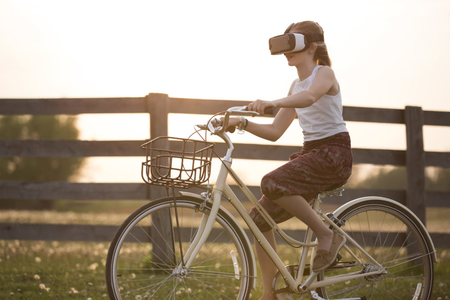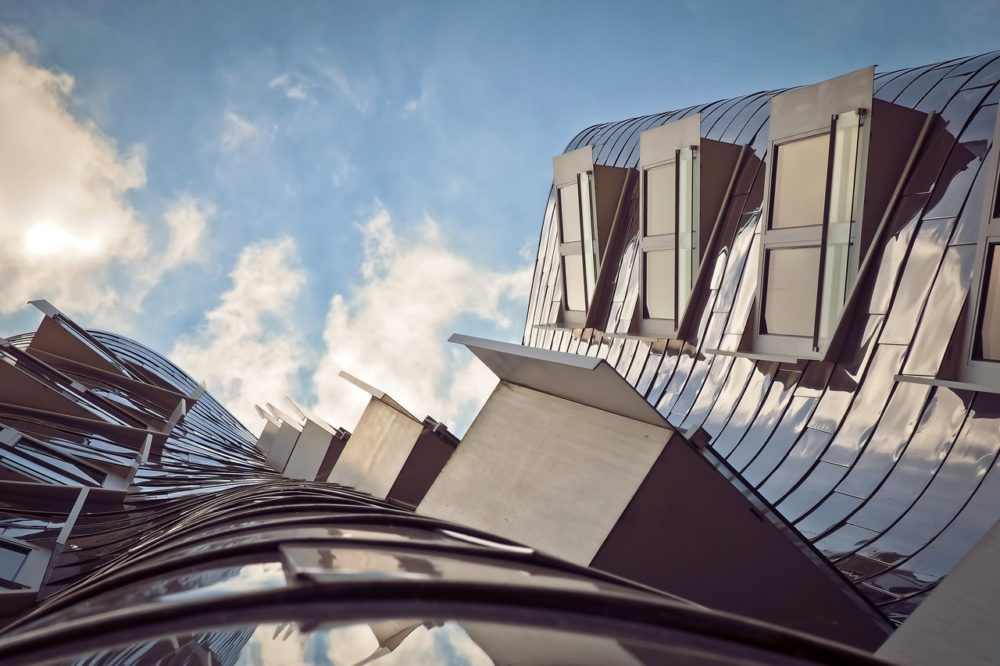Like many tech ideas, Virtual Reality was a concept born before its time. Back when computers still filled rooms, thinkers like Stanley G. Weinbaum speculated about the possibility for fiction to take on a life of its own, and through the decades, futurists dreamed of creating virtual worlds of sights and sound using the wonders of technology.
The 1990s came, and behold – computers no longer filled rooms, and what was once an impossible dream was suddenly a reality. Companies like Sega seized the opportunity to develop Virtual Reality with audio/video headsets, allowing gamers to play video games in a virtual space that felt real. Except…it didn’t feel very real. Unwieldy head-pieces coupled with blocky graphics and poor motion tracking rendered early versions of Virtual Reality a commercial flop.
Two decades later, and Virtual Reality is back in style. As graphics processing technology has advanced, big projects like the Oculus Rift and the PlayStation VR have finally delivered on the promises of the dream, allowing users to have impossible experiences like flight, and exploring fantasy worlds in high resolution with realistic motion tracking. Two years ago, Oculus was acquired by Facebook for over $2 billion dollars, demonstrating once and for all that VR is finally a viable commercial opportunity.
Here are 7 ways that Virtual Reality is changing the world as we know it:
Contents
(Virtual) Space Missions
Everybody wants to go to space. Unfortunately, it may be a pretty long time before you get the chance to do that, and even then, it’s not going to be cheap. But never fear! Thanks to 3D imaging technology on recent NASA probes, it’s possible to construct a photorealistic, virtual version of planets like Mars that can safely be explored using Microsoft’s Hololens, and soon on other platforms including the Oculus Rift, Samsung Gear, and HTC Vive.
NASA has also been using Virtual Reality to train astronauts for work on the International Space Station. In the past, training for work in space has been tricky – Astronauts have used huge swimming pools to simulate the difficulties of operating in a zero gravity environment. But thanks to VR, complicated situations can be accurately recreated so Astronauts know what to expect once they get off a Shuttle.
In the future, NASA may also use VR to give Astronauts a break from a long journey to Mars, letting them experience a virtual Earth while stuck in small Space Capsules.Testing Cars before Manufacture
Building a car is expensive. Sticking a dummy inside a car and crashing it into a wall to see if it’s safe is also expensive. Manufacturing cars and failing to notice a design flaw that leads to death and massive recalls is extremely expensive.
The Ford Motor Company noticed this, and thought – “hey, how about crashing virtual cars into virtual walls first? That would probably be safer, and cheaper.” And they were right – since December of 2013, Ford has been using Virtual Reality to test cars as soon as they are designed to determine their safety, how smoothly they drive, and whether they will actually be an enjoyable experience for consumers.
The same technology also gives people a chance to virtually drive cars before buying them. Ford, Hyundai and Volvo have all started using virtual showrooms to help customers feel better about laying down a $20,000 check for a brand new car.
Learn About History (by actually being there)
History doesn’t have to be boring. There’s a reason that movies about ancient Rome tend to be box office hits. But Virtual Reality may take historical education a step further – Timelooper is using VR to recreate important historical events in countries around the world. Launched in London, right now Timelooper’s catalogue mainly contains important events that took place in the city, including the Great Fire of London in 1666, and the Blitz of WWII. A few months ago, the app also expanded to New York City, and will soon recreate historical events in China, Germany, Spain and Washington D.C.
VR history isn’t limited to recreation, however. Google has been capturing 3D images of important historical sites like Pompeii, for instance, which can be virtually explored using Google Cardboard. Virtual Heritage not only gives people living in the present a chance to explore the past, but will give future generations an opportunity to experience the present by preserving our world in Virtual Reality.
Architects can explore the buildings they design
In the past, building design was not a very hands on experience. You used your drawing paper and pencils to create detailed floor plans, and at best, you’d get a small scale model before spending millions of dollars to create a high-rise skyscraper.
Virtual Reality will change this forever. In 2015, visualization artist Olivier Demangel announced that VR would let designers “change the world like a god”. True to his predictions, since then, tools like VRTisan have been released which not only allow architects to design buildings, but to explore and modify them in real time using PlayStation VR.
Immersion Journalism
Modern photojournalism is flawed. Photographs offer a limited perspective of world events, don’t tell the whole story, and are often manipulated as propaganda. During the Great Depression, The Farm Security Administration hired photographers to show the effects of the Dust Bowl, and since then, many have suggested that they deliberately made things seem much worse than they actually were.
Virtual Reality may help to revolutionize journalism, and give people a much better understanding of major events happening in the world. In 2014, Project Syria was debuted at the World Economic Forum, giving viewers a chance to explore the scene of a bombing in Syria, and virtually experience a refugee camp.
Doctors can train on virtual patients
Everybody needs doctors, but nobody wants to be a lab rat. Thanks to VR, instead of experimenting with cadavers and expensive silicon dummies, medical students now have the opportunity of practicing their medicine on virtual students.
At Idaho State University, VR headsets are being used in conjunction with haptic feedback (gloves that simulate physical sensation) to simulate procedures like catheter insertion and environment sterilization. The technology is also being used by surgeons and dentists to safely practice complicated and dangerous operations without cutting open a human being.
Go to work without leaving your home
As the rate of telecommuting climbs in the U.S, people are spending more time away from the office, and more time at home. As nice as it may be to make money in your pajamas, working at home takes away the chance for face to face interaction with co-workers, and water cooler banter.
Virtual Reality may give telecommuters the chance to occupy a virtual office and attend meetings with coworkers without the gas (or plane ticket) it takes to get to work. That’s the mission of AltspaceVR, which uses robotic avatars in a real workplace to stream the environment to a telecommuter wearing a VR headset.
This technology may eventually be used in colleges, schools, and even social venues, creating a new dimension of ‘long distance friendship’.
Summary
It’s pretty clear that Virtual Reality isn’t just for games. Many industries are taking advantage of the possibilities created by VR, and developers have been pushing high-level concepts that could revolutionize the way we live, work, learn and communicate with one another; and we’ve only touched on immediate possibilities presented by VR. As time goes on and technologies continues to advance, VR may wind up changing the world much like computers, smartphones and Internet did in the past.



